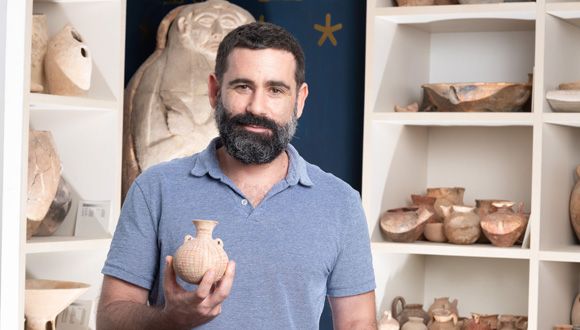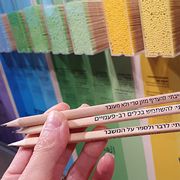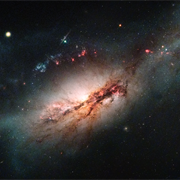Ancient Tools Reveal Earth’s Magnetic Field
Our planet already had an all-time low magnetic reading, and recovered
While the essence and origins of the Earth’s magnetic field have remained largely unresolved, it is known to be connected to various phenomena in the atmosphere and the planet's ecological system, including – possibly – having a certain impact on climate. Its weakened state, therefore, is a cause for concern among climate and environmental researchers. Albert Einstein included the planet's magnetic field among ‘the five greatest mysteries of modern physics’, and our questions are many: Does it fluctuate naturally? Are we humans to blame for its current state? If the magnetic field does impact the climate, is its weakened state reversible?
In order to open a peephole into this great riddle, an international study, led by TAU’s Prof. Erez Ben-Yosef of the Jacob M. Alkow Department of Archaeology and Ancient Near Eastern Cultures was carried out. The study revealed characteristics of Earth’s magnetic field that prevailed in the Middle East from 10,000 to 8,000 years ago, and gives rise to hope.
A Great Mystery of Modern Physics
At present time, our knowledge about the planet’s magnetic field is limited to a few basic facts: It is generated about 3,000 km below the earth’s surface; it protects the planet from continued bombardment by cosmic radiation and thus allows life as we know it to exist; it is volatile and its strength and direction are constantly shifting.
Instruments for measuring the strength of the Earth's magnetic field were only invented 200 years ago. In order to obtain findings from earlier periods, scientists have turned to archaeological and geological materials that store geomagnetic information when heated to high temperatures. Geological samples only provide scientists with a date range of a thousand of years at best, and while ceramic artifacts can be dated more precisely, their maximal range is up to 8,500 years ago, when they were invented.
Pioneering Burnt Flints for Data Extraction
Kadar Family Award for Outstanding Research recipient Prof. Ben-Yosef’s team overcame this constraint by using, for the first time, burnt flints from prehistoric sites dating to the Neolithic period – about 10,000 to 8,000 years ago. “Working with this material extends the research possibilities tens of thousands of years back, as humans used flint tools for a very long period of time prior to the invention of ceramics,” he explains. After enough information is collected about the changes in the geomagnetic field over the course of time, the team will be able to use it in order to date archaeological remains
Materials used in the current study came from four archaeological sites in Wadi Feinan (Jordan). Overall, the researchers examined 129 items found at the excavations to reconstruct the magnetic field from this time period. The research team included Prof. Lisa Tauxe, head of the Paleomagnetic Laboratory at the Scripps Institution of Oceanography, in collaboration with other researchers from the University of California San Diego, the Istituto Nazionale di Geofisica e Vulcanologia, Rome and from Jordan.
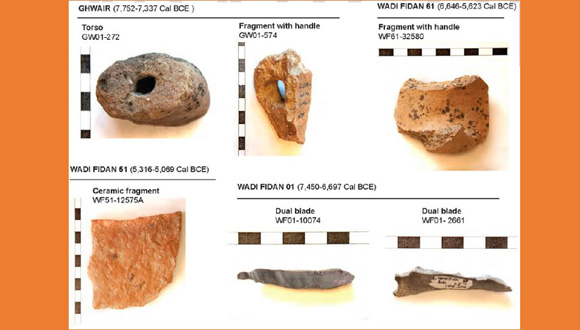
Burnt flints and ceramics used to reconstruct the strength of the ancient geomagnetic field
A Promising Pattern
The researchers were able to detect patterns that may help us understand the behavior of the magnetic field and its environmental impact today: "Since the time scientists began to measure the magnetic field less than 200 years ago, we have observed a continuous decrease in the field's strength. This fact gives rise to a concern that we could completely lose the magnetic field that protects us against cosmic radiation and therefore, is essential to the existence of life on Earth,” explains Prof. Tauxe.
“The findings of our study can be reassuring: This has already happened in the past. Approximately 7,600 years ago, the strength of the magnetic field was even lower than today, but within approximately 600 years, it gained strength and again rose to high levels." Apparently, all hope is not lost.
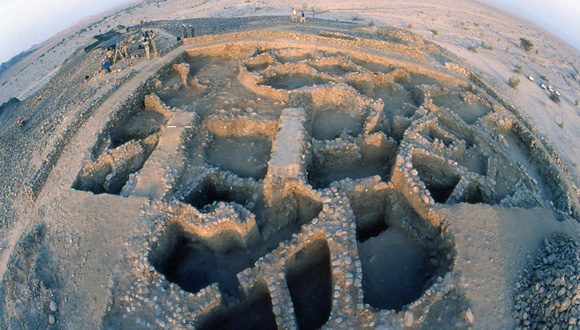
Excavations in Tel Tifdan/ Wadi Fidan. Photo courtesy of Thomas E. Levy
The research was carried out with the support of the US-Israel Binational Science Foundation, which encourages academic collaborations between universities in Israel and in the US. The researchers note that in this case, the collaboration was particularly essential to the success of the study because it is based on a tight integration of methods from the fields of archaeology Unvand geophysics, and the obtained results are notably relevant to both of these disciplines. The research findings were published in the latest issue of the Proceedings of National Academy of Sciences (PNAS).


